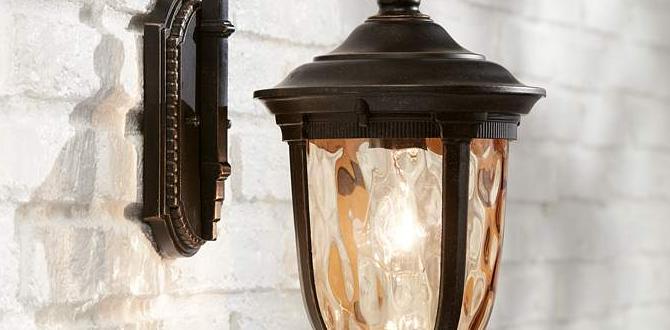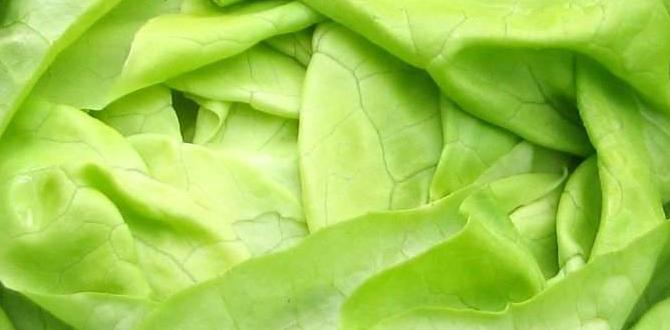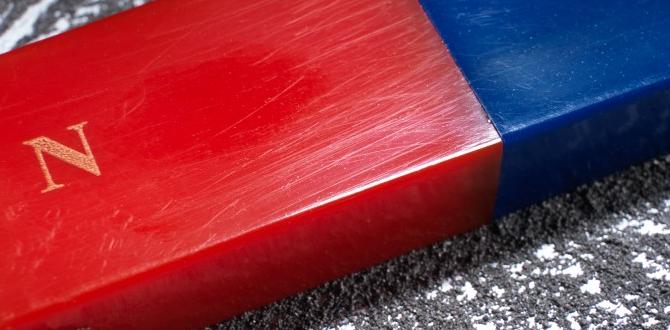Bolded Quick Summary: Choosing the right planters for indoors is key to happy, healthy plants! Look for drainage, size, material, and style that suits your plant’s needs and your home’s decor. Our guide makes selecting the perfect indoor planter simple and stress-free, ensuring your green friends thrive.
Welcome! Thinking about bringing a bit of green into your home? That’s wonderful! Indoor plants can brighten any space and even lift your mood. But where do you start with planters? It can feel a little overwhelming with so many choices. Don’t worry, I’m here to help! We’ll walk through everything you need to know to pick the best pots for your leafy companions. Ready to create your indoor oasis? Let’s get started!
Planters For Indoors: Your Essential Beginner’s Guide
Having plants indoors is a fantastic way to connect with nature, even if you don’t have a sprawling garden. They add beauty, purify the air, and can even boost your well-being. But the pot your plant lives in is more than just a container; it’s its home! The right planter can make a world of difference to your plant’s health and how stylishly it fits into your living space. For beginners, choosing planters can seem like a jungle. But fear not! This guide will demystify planters for indoors, helping you make smart choices that lead to thriving greenery and a happier home.
Why Choosing the Right Indoor Planter Matters
Every plant needs a good home, and for indoor plants, that home is their planter. The right planter does more than just look pretty. It plays a crucial role in:
- Drainage: This is perhaps the most critical factor. Too much water stuck around the roots can lead to root rot, a common killer of houseplants. Planters with drainage holes are essential.
- Air Circulation: Plant roots need to breathe! The right planter material and design can help allow for some air exchange.
- Moisture Retention: Some plants prefer their soil to dry out between waterings, while others like it consistently moist. The planter material greatly influences how quickly soil dries.
- Root Growth: As a plant grows, its roots need space. A planter that’s too small will eventually stunt growth, while one that’s too large can hold too much moisture for the plant’s current needs.
- Style and Aesthetics: Let’s be honest, planters are also a big part of your home’s decor! The right planter can elevate your plant and your room.
- Weight and Stability: Larger plants, especially those with taller growth habits, need stable planters to prevent them from tipping over.
Types of Indoor Planters: Material Matters
The material of your planter affects moisture levels, weight, breathability, and how it looks. Here’s a rundown of common indoor planter materials:
Terracotta (Unglazed Clay)
Terracotta is a classic for a reason. It’s porous, meaning water and air can pass through its walls. This is excellent for plants that prefer their soil to dry out more quickly, like succulents and cacti. It also helps to prevent overwatering.
Pros:
- Excellent breathability and drainage.
- Helps soil dry out faster, reducing root rot risk.
- Natural, earthy aesthetic.
- Inexpensive and widely available.
Cons:
- Dries out very quickly, requiring more frequent watering for some plants.
- Can develop unsightly water stains on the outside.
- Brittle and can chip or break easily if dropped.
- Terracotta is porous and can wick moisture away from the soil, which can be a disadvantage for plants that need consistent moisture.
Ceramic
Ceramic planters are often glazed, giving them a smooth, decorative finish. They come in a huge variety of colors, patterns, and styles. Because they are usually glazed, they don’t ‘breathe’ as much as terracotta, meaning the soil stays moist longer.
Pros:
- Beautiful and decorative, a wide range of styles.
- Can be very sturdy and durable (if not dropped!).
- Glazed surface is easy to clean.
- Good for plants that prefer consistently moist soil, as they retain moisture well.
Cons:
- Most have no drainage holes (decorative pots), so you’ll need to use a nursery pot inside or drill holes yourself.
- Can be heavy, especially larger sizes.
- More expensive than terracotta.
- If not glazed on the inside, some can still wick moisture.
Plastic
Plastic planters are lightweight, affordable, and come in countless shapes and colors. They retain moisture well, which can be good for plants that like damp soil but a risk for others prone to root rot.
Pros:
- Lightweight and easy to handle.
- Inexpensive and durable.
- Good at retaining moisture.
- Often come with drainage holes.
- Easy to clean.
Cons:
- Can look less premium than other materials.
- Less breathable; can lead to waterlogged soil if overwatered.
- May degrade or fade in direct sunlight over time.
- Not as environmentally friendly as some other options.
Metal
Metal planters, like those made from galvanized steel or aluminum, offer a modern and industrial look. They are durable but can heat up significantly in direct sun, which can stress plant roots.
Pros:
- Durable and long-lasting.
- Modern aesthetic.
- Can be lightweight depending on the metal.
Cons:
- Can rust (especially iron or steel without proper coating).
- Can get very hot in direct sun, potentially damaging roots.
- Often lack drainage holes and may need drilling.
- Can be expensive depending on the metal and design.
Wood
Wooden planters, like wooden crates or custom-built boxes, add a warm, natural touch. Untreated wood will eventually decompose, while treated wood can sometimes leach chemicals. Cedar and redwood are naturally more rot-resistant.
Pros:
- Natural and attractive aesthetic.
- Can be custom-built to any size.
- Provides good insulation for roots.
Cons:
- Can rot over time, especially untreated wood.
- Can be heavy.
- May require a liner to prevent soil from drying out too quickly or to protect the wood.
- Can be more expensive, especially made from durable woods.
Concrete
Concrete planters are extremely durable and heavy, offering a robust, modern, and industrial look. Due to their density, they don’t breathe well and retain moisture.
Pros:
- Extremely durable and weather-resistant.
- Heavy, providing great stability for large plants.
- Modern, minimalist aesthetic.
Cons:
- Very heavy, making them difficult to move.
- Non-porous, so they retain a lot of moisture.
- Can be expensive.
- Often lack drainage holes and can be difficult to drill.
Fabric Pots (Grow Bags)
These are fabric containers, often made from recycled materials. They are lightweight, breathable, and excellent for air pruning roots, which promotes healthier root systems.
Pros:
- Excellent aeration and drainage.
- Lightweight and easy to move.
- Promotes healthy root growth by preventing root circling (air pruning).
- Foldable for easy storage when not in use.
- Environmentally friendly options available.
Cons:
- Soil dries out very quickly, requiring frequent watering.
- Can look less decorative than traditional pots.
- May not be suitable for very long-term indoor aesthetics.
- Can let soil particles through the fabric over time.
For a fantastic resource on soil health and plant needs, check out the Royal Horticultural Society’s (RHS) advice on soil and compost. Understanding these basics will help you choose the right planter!
Key Features to Look For in Indoor Planters
Beyond material, several features are crucial for a successful indoor planting experience:
Drainage Holes: The Non-Negotiable
This is where many beginners stumble. Unless you are an expert at watering and fully understand your plant’s specific needs and soil, a planter must have drainage holes. These small holes at the bottom of the pot allow excess water to escape, preventing your plant’s roots from sitting in soggy soil, which leads to root rot.
If you fall in love with a planter that doesn’t have drainage holes, you have two main options:
- Use it as a Cachepot: Place the plant in its original plastic nursery pot (which should have drainage holes) and put that whole pot inside the decorative cachepot. Remove the inner pot to water, let it drain, then place it back.
- Drill Holes: Depending on the material (ceramic and concrete can be tricky!), you might be able to drill holes yourself. Use the appropriate drill bit (e.g., a diamond-tipped bit for ceramic or glass) and watch tutorials on how to do this safely.
Size Matters: Finding the Right Fit
A planter that’s too small will restrict root growth. If roots have nowhere to go, the plant will struggle to take up water and nutrients, leading to stunted growth, yellowing leaves, and a general lack of vigor. On the other hand, a planter that is too large can hold too much soil, which can retain excessive moisture that the plant’s roots can’t absorb. This excess moisture creates a breeding ground for fungal diseases and root rot.
General Rule of Thumb: When you repot a plant, choose a new planter that is 1-2 inches larger in diameter than the current one.
Planter Shape
The shape of a planter can also influence root health and watering needs:
- Taller, narrower pots: Often good for plants that have a strong taproot or grow tall and slender.
- Wider, shallower pots: Better for plants that spread horizontally or have fibrous root systems.
- Self-watering planters: These have a built-in reservoir that wicks water up to the soil as needed. They are great for busy people or those who tend to underwater, but use them with caution for plants that dislike consistently moist soil.
Drainage Trays & Saucers
If your planter has drainage holes, you’ll need a way to catch the excess water. This is where trays or saucers come in. They sit underneath the planter and protect your furniture and floors from water damage. Ensure the tray is the right size for your planter and can hold a reasonable amount of water without overflowing.
Choosing Planters for Specific Plant Types
Different plants have different needs, and their ideal planter will vary. Here’s a quick guide:
| Plant Type | Ideal Planter Material | Why? | Drainage Needs |
|---|---|---|---|
| Succulents & Cacti | Terracotta, unglazed ceramic | Dries out quickly, good airflow | Essential, fast-drying soil |
| Herbs (Basil, Mint, Rosemary) | Terracotta, fabric pots, ceramic (with drainage) | Good drainage, prevents waterlogging | Essential, prefer not to sit in water |
| Tropical Plants (Ferns, Calatheas, Monsteras) | Plastic, glazed ceramic, self-watering | Retains moisture, provides consistent humidity | Essential for preventing root rot, but needs to hold moisture |
| Flowering Plants (African Violets, Orchids) | Plastic, specialized orchid pots, glazed ceramic (with drainage) | Consistent moisture, good aeration for roots | Essential, often specific needs (e.g., clear pots for orchids to see root health) |
| Vegetable Seedlings (Tomatoes, Peppers) | Biodegradable pots, plastic, fabric pots | Space for root growth, good drainage | Essential, especially as they grow |
DIY Planters: Creative & Sustainable Options
Embracing DIY planters is a fantastic way to be creative, save money, and give new life to old items. It also aligns perfectly with a sustainable lifestyle!
Repurposing Household Items
Look around your home for items that can be transformed:
- Old Mugs, Teacups, and Tins: Clean them thoroughly and drill drainage holes in the bottom. These are perfect for small succulents or herbs.
- Colanders and Sieves: These already have holes! Line them with a bit of moss or a coffee filter to prevent soil loss, and they make excellent hanging planters.
- Old Boots or Shoes: For a quirky, rustic look, drill drainage holes in the soles and fill with soil.
- Mason Jars (with a twist): Instead of planting directly in a mason jar, use it as a cachepot. Or, create a “false bottom” by adding a layer of gravel or LECA (Lightweight Expanded Clay Aggregate) at the bottom to lift the soil above any standing water, although drainage holes are still preferred.
Building Your Own Planters
If you’re a bit more hands-on, consider building:
- Wooden Crate Planters: Purchase or find old wooden crates. Line them with landscape fabric or heavy-duty plastic (with drainage holes poked in) to extend their life and prevent soil from washing out.
- Pallet Wood Planters: Pallet wood is readily available and can be used to construct simple boxes. Ensure you use heat-treated (HT) pallets, not chemically treated (MB) ones. Seal or paint the wood to protect it.
Remember to always ensure your DIY planters have adequate drainage. A quick search for “how to drill drainage holes in ceramic pots” can provide helpful visual guides if you’re attempting this yourself!
Where to Buy Indoor Planters
You don’t have to go far to find great planters:
- Local Garden Centers & Nurseries: Often have a wide selection of materials and styles, and the staff can offer personalized advice.
- Home Improvement Stores (e.g., Home Depot, Lowe’s): Offer a good range of basic plastic, terracotta, and ceramic options, often at competitive prices.
- Online Retailers (e.g., Amazon, Etsy, specialized plant shops): Provide an enormous variety, from unique artisanal pieces to basic essentials. Etsy is a great place to find handmade, sustainable, or vintage planters.
- Thrift Stores & Flea Markets: Excellent for finding unique, affordable treasures that can be repurposed.
- Discount Stores: Often have inexpensive plastic or basic ceramic options that are perfect for beginners or for temporary use.
When buying online, always check the dimensions carefully and read reviews to get a sense of the quality and whether drainage holes are included.
Common Beginner Mistakes to Avoid
We all make mistakes when we start gardening – it’s part of the learning process! Here are some common slips with planters that you can easily sidestep:
- Forgetting Drainage Holes: As we’ve stressed (!), this is the big one. Plants need to drain.
- Choosing the Wrong Size: Too big and the soil stays wet; too small and the plant is root-bound.
- Using Only Decorative Pots (Cachepots) Without Proper Use: If using a pot without drainage, be very mindful of watering. The “pot-in-pot” method is the safest bet here.
- Not Considering Material for Plant Needs: Putting a moisture-loving fern in a fast-drying terracotta pot without watering diligently will lead to a sad fern.
- Ignoring Weight: A large, heavy ceramic or concrete planter might be a real struggle to move when you need to repot or clean.
- Not Pairing With a Saucer: Protect your surfaces! Always have a way to catch excess water.




